Driving digital transformation one touch at a time
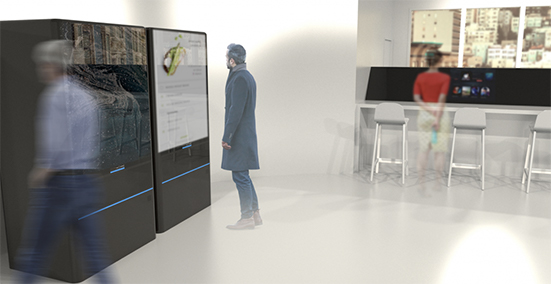
Driving digital transformation one touch at a time 3M Share Experientia gathered expert insights and voice of customer insights about intelligent self-service applications to create coherent storytelling for 3M clients and to provide compelling choices through predictive, engaging and learning touchpoints. We conducted a global benchmark research and interviews with industry experts to understand trends, changing paradigms and crucial concepts around intelligent self-service and created a B2B sales tool prototype: the innovation playbook that communicates the research outcomes. 3 things to know Global research Our benchmark focused extensively on Europe, US, China and Japan while industry experts joined our research from 5 different countries, bringing insights from all around the world. Driving digital transformation Design principles modelled empathic, people-centric frameworks for developing self-service experiences. Innovation playbook in action Future scenarios illustrate fast, intuitive, hassle-free experiences to end users who expect beauty and usability, familiarity and seamless connections. Gallery In depth Service mix: Design thinking Envisioning Business strategy design Information architecture Participatory design Service design Ethnography Context 3M offers a wide range of standard and customizable single-touch and multi-touch systems that are easy to integrate into OEM and display solutions, as well as a portfolio of fully integrated displays. This allows 3M clients to create interactive and immersive touchscreen experiences with systems and displays that are engineered for commercial applications and backed by advanced touch technology that’s ultra-fast, reliable and responsive. Challenge 3M reached out to Experientia to better understand its customers context and future scenarios that could strengthen its service offering. Research Experientia conducted a global benchmark research, collecting best practices and global innovative examples of self-service UX/UI systems, extracting relevant themes and trends. We interviewed 10 experts in architecture, design, food & beverage to gather first hand knowledge on how customer experiences are fueling innovation in the segment, and to understand trends, changing paradigms and crucial concepts around intelligent self-service. Design Experientia prioritized the interview insights using affinity mapping and constructed near-future scenarios analyzing different factors affecting UX. Ideation sessions generated new ideas to redefine how brands engage customers with intelligent self-service applications. Experientia designed a self service innovation playbook documenting research insights, design principles and scenario. It comes in a box containing the insights booklet, idea cards and impact map for co-creation, to aid collaborative design making. Impact The self service innovation playbook is now being used as a B2B sales tool to engage clients. Related projects All Services Behavioral design Research and assessment Strategy B2B Collaboration UI, redesigning the filter navigation experience B2B Reinventing customer and supplier interactions for a multinational flooring company B2B AR tools for industrial maintenance Go back to our portfolio
Packaging upgrade for Chinese food producer
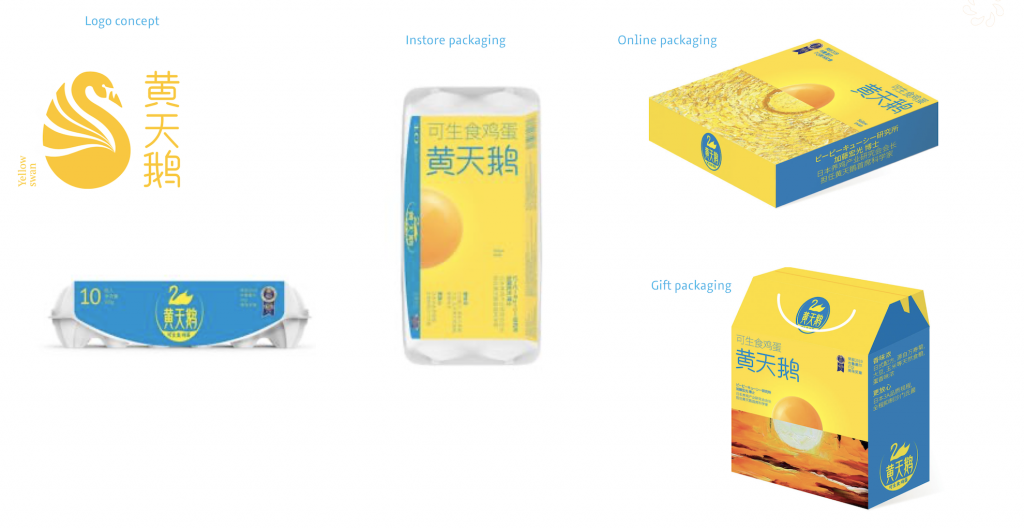
Packaging upgrade for Chinese food producer The Yellow Swan Share The Yellow Swan is a new Chinese food company committed to the highest quality standards of egg production. Building on the Japanese practice of eating raw eggs in the morning, Yellow Swan produces high quality eggs to be eaten raw. The company aims to build world-class high-quality egg leadership brand based on innovative technology, equipment, and production management models. 3 things to know Packaging design explores the core value of the brand The core value of the brand is quickly and immediately communicated to consumers through the packaging. Pictographic graphics logo design builds new brand identity We simplify the shape of swan and yolk to make it more friendly and geometric. Creative and easy to identify. Different sales platform use different packaging design We designed different packaging for different sales platforms to maintain the unity of the visual system. Gallery Egg box design Identity “Simply natural” concept “Safe and good to eat raw” concept “Swans in Chinese scenery” concept “Eat it raw” concept “Sunrise” concept In depth Service mix: Design thinking Business strategy design Description The project involved a concept development phase to solve specific packaging design needs of the brand. We developed 2 main packaging design concepts from supportive visuals and content to a precise brand message. The aim was to develop a concept that provides a distinct design solution and effortless effectiveness on multiple levels, is unique, and stands out from retail shelfs. Experientia redefined the overall brand visual identity and strategy in terms of brand’s core values, brand voice, and brand messaging architecture, and then developed the production ready design specifications of the instore, online and gift packaging. Related projects All Services Behavioral design Research and assessment Strategy Brand UX Qualitative research on food and drink consumption to develop new consumer services Brand UX Redesigning the visitors’ museum experience Go back to our portfolio
Reinventing customer and supplier interactions for a multinational flooring company
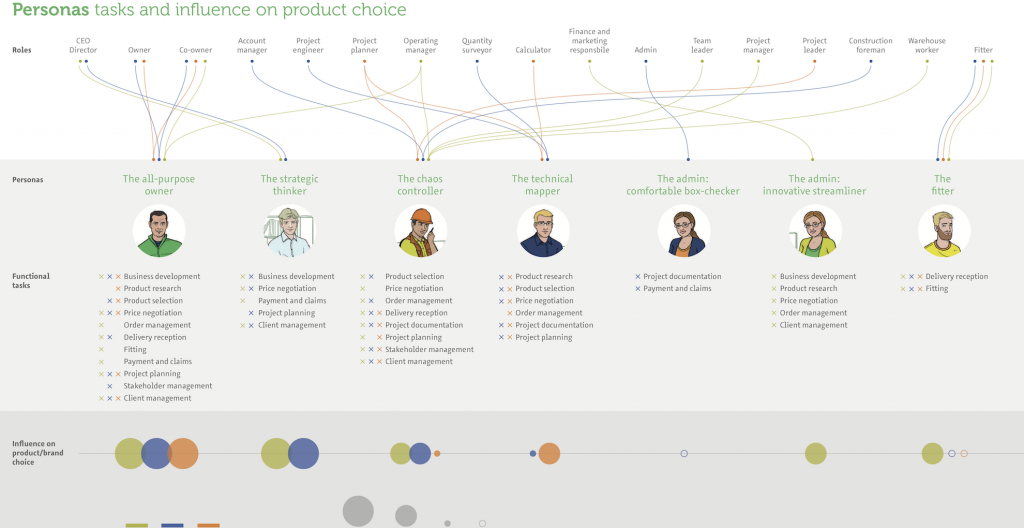
Reinventing customer and supplier interactions for a multinational flooring company Tarkett Share Tarkett, a multinational flooring manufacturer, asked Experientia to explore ways to make them the easiest flooring company to interact with in Europe and the Americas. Experientia conducted in-depth ethnographic research, including contextual interviews and shadowing, in five different countries across Europe, the USA and Russia. We investigated the diverse range of stakeholders of the company, from architects, to flooring installers, wholesalers and retailers. 3 things to know Global research Our benchmark focused extensively on Europe, US, China and Japan while industry experts joined our research from 5 different countries, bringing insights from all around the world. Our local researchers conducted contextual interviews with architects, installers and retailers across five countries, ranging from observations of fitters removing flooring at Paris’ Roissy airport to discussions about design choices with architects in New York. Driving digital transformation Design principles modelled empathic, people-centric frameworks for developing self-service experiences. Innovation playbook in action Experientia designed innovative client-centered product/service solutions to improve supply chain performance, internal processes and company culture and grow Tarkett customer experiences. Gallery In depth Service mix: Design thinking Business strategy design Participatory design Behavioral modeling Ethnography Context A historic manufacturer of flooring products of all types, Tarkett faced the challenge of having to address increasingly fast supply lines at construction sites, while the move to digital experiences meant that they had to rethink and restructure their entire service experience. Challenge Our role as Tarkett’s user experience partner was to consolidate key knowledge dispersed across regional and functional divisions, act as an objective research partner in communicating their customers’ varied service and product needs and propose relevant, innovative solutions to improve the customer experience. Research Experientia interviewed and observed 80+ architects, flooring installers, wholesalers and retailers In USA, France, Netherlands, Sweden and Russia, using a range of ethnographic research methods including expert interviews, contextual inquiries and co-creation workshops. Stakeholders interviews and co-creation exercises with a variety of professional roles mapped the supply chain experience of commercial flooring products and services. Fieldwork results, customer journey maps and personas identified emerging themes ranging from sales relationships to life cycle approaches, product sampling to information management, deliveries to work flow issues. This initiative combined Tarkett’s EMEA, Russia and North America teams to share knowledge and work together on developing promising service concepts. To ensure that expert knowledge was incorporated into foundational research, we conducted stakeholder interviews with a range of employees from country sales managers to C-suite executives, who we involved throughout the research design and ideation processes. Design Experientia generated 150+ service opportunities for the different market segments. Co-design sessions with architects, interior designers, installers and retailers evaluated, prioritised and iterated select service opportunities. High value concepts were developed into concept prototypes and tested in the markets. Impact Our painpoint analysis was taken forward by the company into a detailed action plan: the simplest were addressed immediately, while other were the focus of more structured, longer term interventions. New initiatives and projects were launched, including a service for architects who could send their CAD drawings and renderings to Tarkett with 3 floor choices and would receive a few days later – and free of charge – a completed rendered visualization with those floors. Related projects All Services Behavioral design Research and assessment Strategy B2B Collaboration UI, redesigning the filter navigation experience B2B AR tools for industrial maintenance B2B Driving digital transformation one touch at a time Go back to our portfolio
CityOpt: Engaging citizens to facilitate energy demand responses
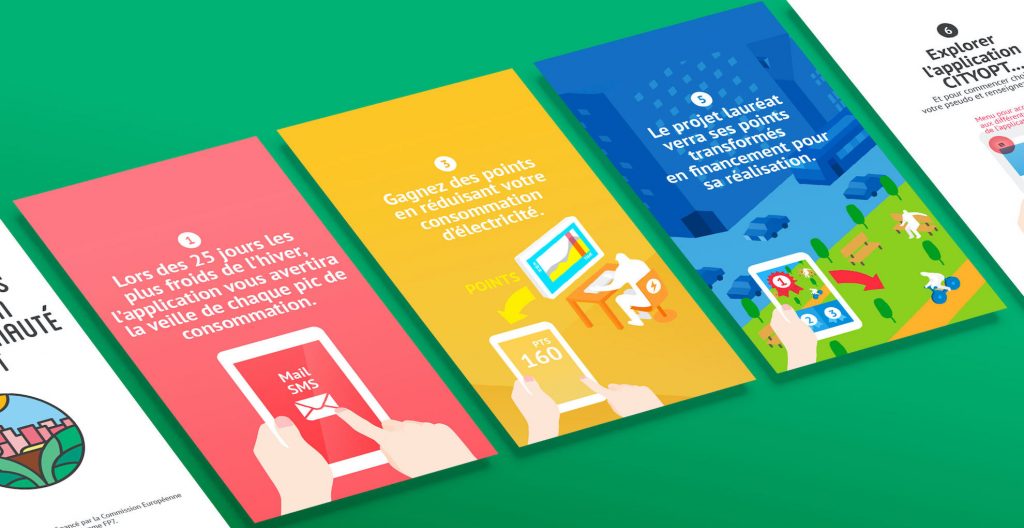
CityOpt: Engaging citizens to facilitate energy demand responses European Commission FP7 Share CityOpt, a research project funded under the FP7 European Commission framework, is getting citizens involved in testing new tools to reduce energy consumption during peak loads, with the goal that this pilot program will set a new trend in protecting locations with fragile electricity supplies. 3 things to know Encouraging behavioral change The CityOpt app helps people reduce domestic energy consumption during energy peak loads and nudges them towards more eco-friendly behaviors. Incentivizing energy reduction Their savings were rewarded with points, which participants could “donate” to a local community project of their choice, helping to maintain people’s engagement with the app. Real time monitoring An office block in Vienna, Austria, uses the CITYOPT app to identify the best scenario to integrate energy supply sources with fluctuating temperatures into an efficient micro-energy network.. Gallery In depth Service mix: Policy development Envisioning Business strategy design Prototyping Information architecture Participatory design Service design User experience testing Context One of France’s most fragile regions, the Provence-Alpes-Côte d’Azur, is perhaps best known for its vineyards, lavender groves and sparkling coastal cities like Nice. It is however also one of France’s most fragile regions for electricity supply. Particularly in winter, when electrical heating sees electricity use rise, the locals experience frequent blackouts, as the local energy provider, EDF, tries to manage the supply. This is why Nice Côte d’Azur has been selected as a pilot city for the CITYOPT project, an initiative that aims to create new methods and tools to deal with energy consumption, and to involve local citizens in designing and testing them. CITYOPT is a pilot programme funded by the European Commission that explores and tests new tools for reducing energy consumption during peak loads. Research Experientia has led the user research activities for the pilot program. User experience methodologies have engaged local citizens from the area in interviews, workshops and design activities. These have defined what people really need to help them control their energy use, and to create a mobile app that the pilot participants will be able to use to do just that. The entire project has applied a user experience (UX) methodology, to make sure that the tools and methods that the project proposes for energy management resonate with the people who will have to use them. It’s not just Nice Côte d’Azur: other pilots are planned for Helsinki, Finland and Vienna, Austria, where similar UX methods are also being applied. Right now, the Nice pilot looks at the residential level, and explores how people’s everyday behaviors can be nudged to better support the energy use of the entire region. Model Changing individual behaviors to help the entire region The Nice Côte d’Azur local population plays a crucial role in reducing domestic electricity consumption during peak loads. To help people change the way they consume electricity, the pilot provides selected locals with the CITYOPT mobile app (aka the CITYOPT Operational tool). The app informs people about upcoming network peak loads, and then uses playful persuasion to get them to commit to lowering their energy consumption at a specific time. How the app was created – a participatory process The Experientia design team also focused on the visual design of the mobile application. In workshops for design idea creation, designers and local stakeholders came together to brainstorm innovative ideas that could potentially be included in the app. A second participatory workshop, again involving local stakeholders, compared these ideas to the expectations and needs of local people, which had been uncovered in the original interviews and workshops with people from the region. The feasibility of the different ideas was discussed, and the final features for the CITYOPT app were selected. Designing, sketching and coding is a long road from ideas to app. First Experientia’s design team, with the support of the local project partners, worked on three wireframes of the app, which defined the information architecture and interaction model for how the app would work. Later on, colors and styles were added, taking it from outline to a fully-fledged design. Experientia then developed the front-end, web-based code, while the consortium partners – CSTB and EDF – implemented the back-end, repositories, hardware interfaces and statistical algorithms. Nice Côte d’Azur Métropole was responsible for localizing the application in French and recruiting local dwellers to participate in the pilot test. Impact The project was piloted with 200 households in Nice using the CITYOPT app during the first wave of testing. During the demonstration test, leader Experientia explored how people use the app, whether they take part in the demand-response scenarios, and what conditions and driving factors are most likely to convince people to participate. The test research was supported by quantitative and qualitative activities like online surveys, contextual interviews and contextual observations. The actual consumption data was also measured through pre-installed smart-meters, and used to evaluate the effectiveness of the CITYOPT system. The CITYOPT project has provided us with real data on effective ways to convince people to reduce their energy use at a level that can help improve the consumption of an entire region. It’s now a matter of scaling up the project to the entire region, and beyond, and providing a body of information that can be used by any region looking for effective ways to reduce energy use. Meanwhile, the other CITYOPT pilot programmes will demonstrate that Nice is not a solitary example, and that user experience methodology can offer real impact on people’s behaviors, and on behavioral change for more sustainable lifestyles. Related projects All Services Behavioral design Research and assessment Strategy Cities & InfrastructureSocial innovation ToNite: social innovation and urban regeneration in Turin, Italy Cities & InfrastructureSocial innovation Low2No: shaping the future of sustainable living Go back to our portfolio
Exploring urban dwelling usage to inform appliance design
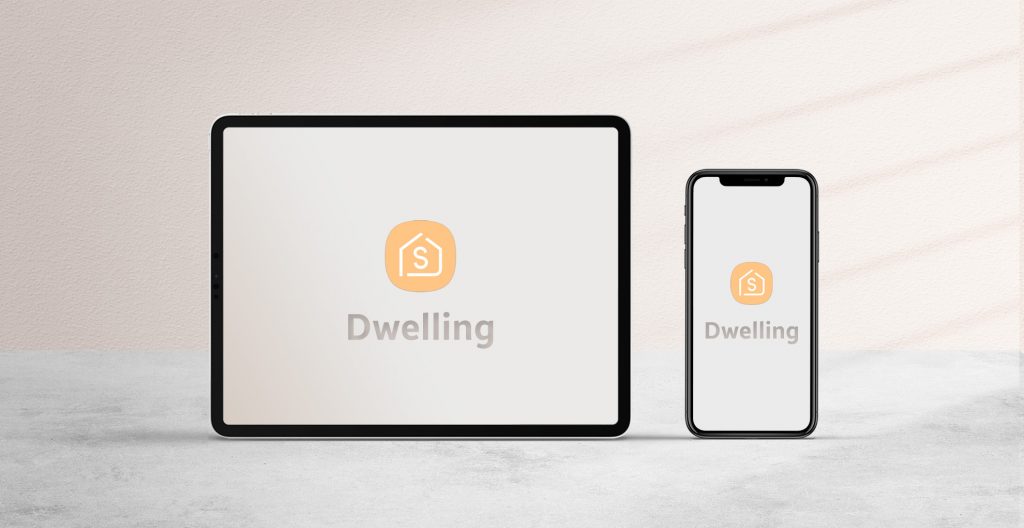
Exploring urban dwelling usage to inform appliance design Samsung Share As the urban population (>75%) is supposed to continue its growth, dwellings demand will follow along. The client requested an analysis of Europe’s housing market, its recent past and emerging trends. Focusing on millennials, the generation approaching the property market, we investigated emerging drivers for both dwelling and major household appliances. 3 things to know Dwelling space is increasingly a premium In the three cities, singles/couples look for 55-65 sq m apartments; families are more focused on 70-80 sq m. It is also common for single people to live in studio apartments (about 30 sq m), especially in Milan and Stockholm. House minimum set-up Tenants in Berlin and Milan usually find, in the dwellings they rent, some basic pieces of furniture (table, chairs, beds) besides a functioning kitchen complete with cabinets. Appliances are transient When renting, people have a temporary attitude towards appliances and they tend to buy either less expensive (to leave-in when relocating), small (e.g. toaster, kitchen robot), or portable ones (e.g. free standing fridges). Gallery In depth Service mix: Business strategy design Behavioral modeling Ethnography Context We supported a client in mapping European changes in residential space, identifying population structures in urbanized areas, while highlighting areas where millennials aspire to live. The research predicts changes in the layout and setup of urban abodes and derives opportunities for base-line vs luxury appliance configurations. Challenge We investigated the EU property market and the demographics of Germany, Italy and Sweden to define the target sample fitting the research brief. The ensuing fieldwork aimed at involving realtors, interior architects and millennial owners and tenants in Berlin, Milan and Stockholm. Research We conducted an extensive fieldwork across Europe, touching 3 cities. Contextual interviews and dwelling observations involved 7 realtors, 19 residents and 3 local experts. The visits in millennial homes exposed the research team to the attitude, lifestyle and purchase drivers of this new generation of tenants and owners. Design The analysis of the extensive body of evidence collected resulted in insights about key drivers influencing millennials’ purchase of dwellings as well as home appliances. Participant profiling guided the team in identifying opportunities for home appliance brands that aim at addressing the expectations of millennial customers. Impact The research helped shed light on initial assumptions, discovering evidences for decoupling prime properties and luxury consumer products: people expect kitchen appliances to come in “kits” linked to kitchens. Customers expect to refer to kitchen suppliers for all issues pertaining kitchen components. As cooking habits change and fresh food consumption increases, people tend to forgo appliances that are culturally connected to long-term food preservation. Open floor plans entail kitchens, and the appliances therein are always on the front-stage. When use scenario switches to full entertainment or living, appliances should be able to blend with the rest of the interior. Related projects All Services Behavioral design Research and assessment Strategy Consumer technology Buttonless: engaging users in interactions with keyless devices Consumer technologyFinance BancoSmart, an award-winning ATM Consumer technology Finding entertainment on the go Go back to our portfolio
Rare disease patient journey mapping
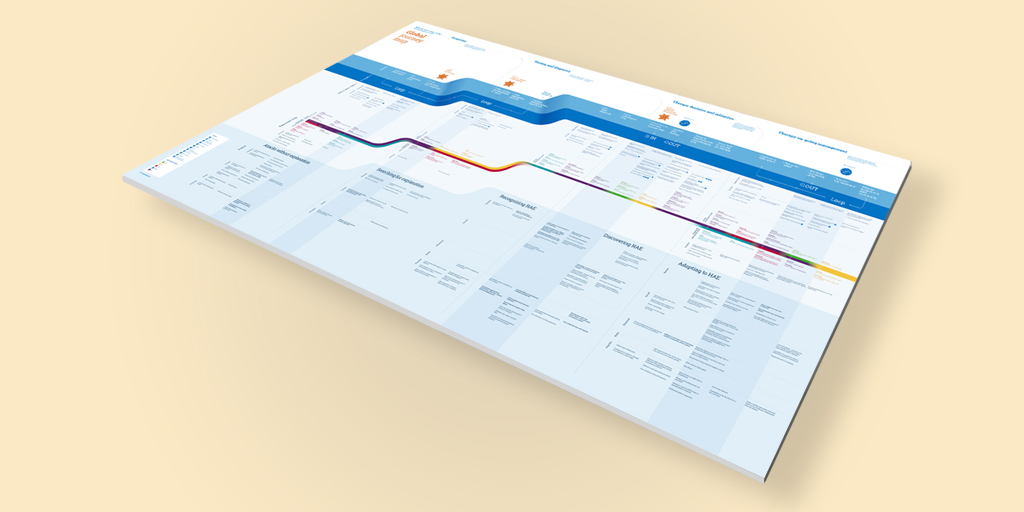
Rare disease patient journey mapping Client confidential (pharmaceutical company) Share A global-to-local approach to represent the patient experience. 3 things to know A toolkit that guaranteed quality and consistency of patient journey mapping process We aimed at redesigning the patient journey maps so they would look consistent throughout the different medical areas of the company and therefore improve usability. Patient experience and emotions at the center We gathered reports from many departments, both medical and commercial and grouped key patient insights in one reference file. At a glance you can gain a good understanding of the patient experience, emotions, behaviors and actions. Face-to-Face validation sessions with cross functional client teams Being able to gather feedback first hand from the expert teams as well as bringing them together in a room has opened up the possibility for great collaboration and future development opportunities. Gallery In depth Service mix: Business strategy design Participatory design Service design Behavioral modeling Ethnography Context Modern pharma companies need to align teams worldwide around a shared global patient journey to guide coherent service design and implementation. This global-to-local approach supports independent, local innovation by providing a shared, global representation of the patient experience, facilitating the company’s patient-centric approach through user-centered design. Challenge This four-month collaboration with the Global Patient Services team of the pharmaceutical company included desk research, journey map information architecture and visual design, pilot testing of a custom localization toolkit, and global patient journey in three local country offices, and iteration for global distribution. Research Our researchers read and evaluated numerous ethnographic research reports, market research summaries, and patient stories in the public domain. Analysis focused on determining the patient journey and distinguishing it from assumptions made from doctor, Pharma, and other stakeholder points of view. Design We developed a journey map representing the global patient journey from first symptoms through a lifetime of ongoing management of the disease. We then developed a “localization toolkit” – a workshop in a box – integrating bespoke activity templates and a recommended agenda to customize the global journey map and patient model to a country’s unique context. Impact Numerous teams have used journey mapping in the past, even for specific rare diseases. Our approach provided added value by integrating emotions, relationships, and the patient’s evolution over time. Designing a journey map of a multi-stakeholder process is the tip of the iceberg. Significant critical design and communication efforts were focused on communicating the impact of switching from a therapy to patient point of view. Related projects All Services Behavioral design Research and assessment Strategy Health GoCare: Interactive dashboard for a better home hospitalization service HealthSocial innovation Singapore: a city for people aging gracefully FinanceHealth XME Salute: integrating insurance offerings with wellness and health practices Go back to our portfolio

